RoadmapLive Feed
Roadmap breaking news and instant alerts. Crypto Feed's minimalist interface delivers verified headlines, price movements, and protocol updates the moment they happen. Fast, focused, no fluff.
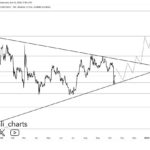 Cardano Price Prediction: ADA Faces New Competition In this Rival Altcoin
Cardano Price Prediction: ADA Faces New Competition In this Rival AltcoinCardano has tested investors’ patience for months. Its price keeps circling inside the same range, and every small rally fades before it gains real speed. Yet behind this quiet chart, analysts see pressure building for a major pump. Some predict a comeback for ADA in early 2026 – but others argue that the real story this quarter belongs to a rising rival: Little Pepe ($LILPEPE). This new meme-powered Layer 2 token has turned its presale into one of the most talked-about events of the year. Little Pepe’s fast-selling stages and growing community hint that the next big leap in the altcoin market may come from an unexpected place. ADA Price Forecast Cardano has been part of the crypto story for a long time. Created in 2017 by Charles Hoskinson, it became known for patience and precision rather than hype. But in 2025, that steady approach has tested investors’ patience. Right now, ADA is trading near $0.61, still far below its previous levels. Cardano’s network keeps expanding, though on-chain numbers show slower movement than many expected. Ali’s ADA chart shows that Cardano’s token is trapped inside a tight, symmetrical triangle – a pattern that often precedes a large move. So far, it looks more like a pause than a breakout. Traders want clear proof of strength before jumping back in. Source: X/ali_charts Across the market, the energy has shifted toward newer coins offering faster speeds and livelier communities. Cardano still feels reliable, but next to those rising projects, it seems like it’s moving in slow motion. If the lower trendline fails, support near $0.55 could be tested next. A drop under that level would cancel the bullish setup and signal another long period of sideways trading. Many chart watchers point out that ADA often lags during early bull cycles and tends to move later. The pattern may repeat again: long consolidation followed by a delayed surge. But not everyone wants to wait. As analysts track the triangle’s narrowing range, attention has started to shift toward smaller coins showing faster growth – and Little Pepe is leading that list. Why Little Pepe Is Stealing the Conversation From ADA Little Pepe (LILPEPE) takes the humor and energy of meme culture and builds it on top of real blockchain efficiency. It runs on an Ethereum Layer 2 network, offering fast transactions, low fees, and zero taxes on buys or sells. The project has a total supply of 100 billion tokens, split among presale buyers, liquidity pools, rewards, marketing, and chain reserves. A lot of meme coins are all talk, but Little Pepe’s doing more than that. It’s building a real platform with things people can actually use. Holders can stake, earn rewards, and trade freely without fees eating into their earnings. The project has also passed a CertiK audit, which gives traders additional confidence in the smart contract code. The roadmap keeps things fun but clear, naming stages such as “Pregnancy,” “Birth,” and “Growth.” Each step adds new partnerships, exchange listings, and marketing drives. Little Pepe’s tone is lighthearted, but the execution is serious. The team’s approach – mixing humor with real tech – has already helped it raise over $27 million in presale funding. Many early investors see it as a meme project with staying power rather than a quick-pump token. The Presale Frenzy: $27 Million Raised and Counting People across the crypto space keep talking about the Little Pepe presale. It’s already reached Stage 13, and tokens now sell for around $0.0023, up from $0.0010 when things began in July. Each new phase has sold out faster than the one before, showing that interest keeps rising. If it lists near $0.003, there’s still plenty of room for early profits once trading starts. Community campaigns have helped fuel that excitement. The Mega Giveaway offers 15 ETH in rewards to top buyers and lucky holders. Another event, the $777 K Giveaway, will hand out $77 000 in LILPEPE to ten winners. These promotions increase engagement and expand the project’s audience across social media. With zero trading taxes, fast transactions, and strong community backing, Little Pepe has already achieved what many early-stage tokens struggle to do – turn hype into active participation. The Shift Is Coming – And It Might Not Be in ADA’s Favor Cardano’s long-term story remains solid, but the chart tells a cautious tale. Unless ADA can push past $1.00 with real strength behind it, the price could keep drifting sideways as traders stay on the sidelines. In contrast, Little Pepe is already moving through clear milestones – audited code, presale momentum, and community growth. Its Layer 2 foundation delivers fast speeds and low costs, traits that appeal to both casual users and traders. If the presale continues at the current pace, LILPEPE could enter exchanges with strong volume and visibility, giving it a chance to rise quickly into the market’s top tiers. People waiting on the sidelines might see this as a smart bet. The presale price leaves little room to fall, yet the upside could be huge if excitement keeps spreading. Both coins have potential, but only one seems set to take the lead right now. ADA’s triangle still waits to break; Little Pepe’s launch is already writing the next chapter. JOIN THE LITTLE PEPE (LILPEPE) PRESALE NOW Website | (X) Twitter | Telegram The post Cardano Price Prediction: ADA Faces New Competition In this Rival Altcoin appeared first on 99Bitcoins.
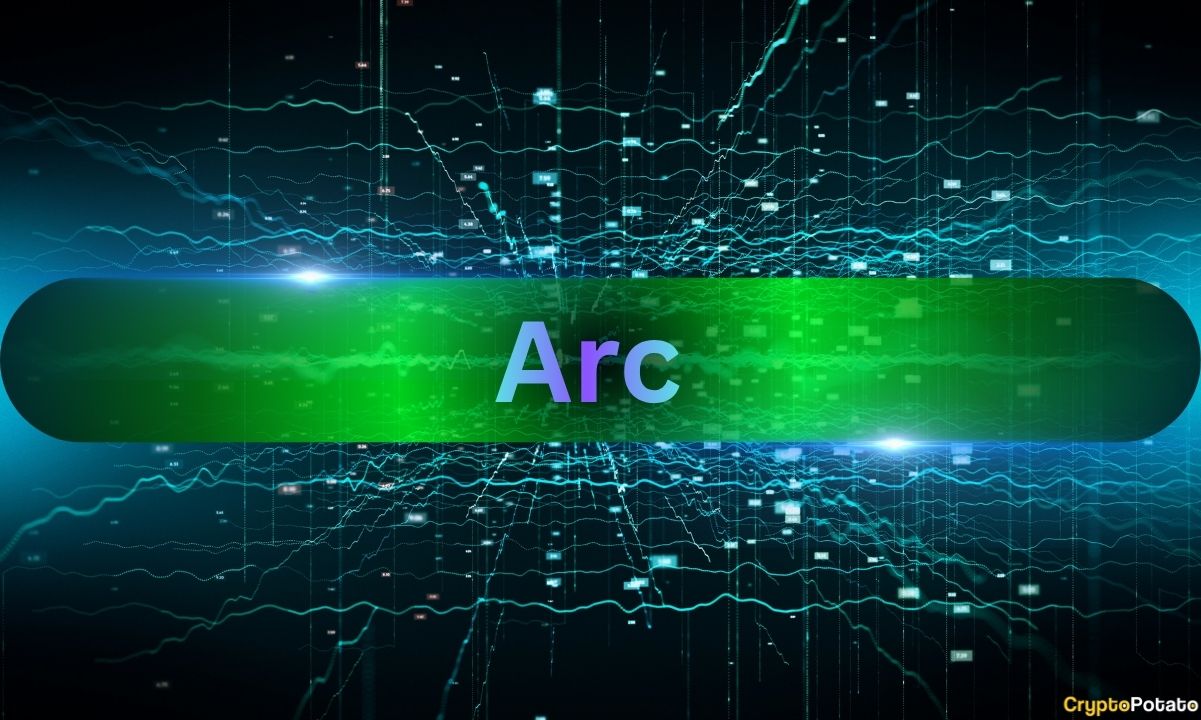 Circle’s Arc Blockchain Testnet Goes Live: Over 100 Partners Including Mastercard, Coinbase on Board
Circle’s Arc Blockchain Testnet Goes Live: Over 100 Partners Including Mastercard, Coinbase on BoardUSDC stablecoin issuer Circle has rolled out the public testnet for its payments-focused blockchain network. The company said on Tuesday that more than 100 institutions, including Visa, HSBC, BlackRock, and AI firm Anthropic, are already participating in the testing phase. The testnet will allow developers, financial institutions, and enterprises to deploy, test, and build applications on Arc, which Circle calls an “Economic OS” for the internet. Unveiled in August as an open Layer 1 network, Arc is designed to support developers and companies seeking to bring real-world financial activity on-chain. Circle said the blockchain’s purpose is to facilitate scalable, globally distributed economic activity across borders. The firm described Arc as a system capable of connecting every local market to the global digital economy. Star-Studded Lineup According to the official press release, the early ecosystem already includes organizations from across major regions such as the Americas, Asia, Europe, Africa, and the Middle East. Participants in the testnet collectively manage trillions of dollars in assets and facilitate billions of transactions daily. Circle aims to position Arc as a foundation for stablecoin issuers and tokenized assets such as equities, credit, and money market funds. The firm also plans to use stablecoins as gas tokens on Arc and build native infrastructure for stablecoin swaps and foreign exchange liquidity. Stablecoin issuers from several regions are already joining the testnet, including Forte Securities (AUDF in Australia), Avenia (BRLA in Brazil), JPYC Inc. (JPYC in Japan), BDACS (KRW1 in Korea), Juno (MXNB in Mexico), Coins.PH (PHPC in the Philippines), and Stablecorp (QCAD in Canada). Circle added that it is in discussions with additional issuers of dollar-, euro-, and other fiat-backed stablecoins to expand Arc’s network. The testnet is also drawing interest from developer platforms and blockchain infrastructure providers. Participants include Alchemy, Chainlink, LayerZero, and thirdweb, alongside cross-chain protocols such as Across, Stargate, and Wormhole. Wallet and infrastructure partners include MetaMask, Fireblocks, Ledger, QuickNode, and Blockdaemon, who are helping make Arc accessible to both institutional and retail users. Major market participants in decentralized finance are also testing Arc’s capabilities. Protocols such as Uniswap Labs, Aave, Curve, and Euler Finance are integrating liquidity and lending tools, while centralized exchanges, including Coinbase, Kraken, and Robinhood, are exploring connectivity. The company said market makers such as GSR, Wintermute, Galaxy Digital, and Cumberland are also contributing liquidity support. Beyond digital asset trading, Circle is engaging with global payments and fintech firms to expand Arc’s real-world use cases. Companies like Mastercard, Visa, WorldPay, Brex, Nuvei, and Amazon Web Services are part of the testnet phase. Capital market firms, including Apollo, BNY Mellon, the New York Stock Exchange, and State Street, are also involved. Banks and asset managers participating include Deutsche Bank, HSBC, Goldman Sachs, Standard Chartered, Invesco, and BlackRock. Distributed Governance While Circle is overseeing the initial phase, the company plans for Arc to eventually be operated by a global set of participants, including financial institutions, technology firms, and developers. The roadmap includes expanding validator participation, building transparent governance frameworks, and enabling community input. The long-term goal is for Arc to function as an open, neutral, and collectively managed layer of economic infrastructure for the internet. The latest follows its public listing in June 2025, when the company raised $1.1 billion and achieved a $6.9 billion valuation. The post Circle’s Arc Blockchain Testnet Goes Live: Over 100 Partners Including Mastercard, Coinbase on Board appeared first on CryptoPotato.
 Circle Launches Arc Testnet With BlackRock, Visa, and AWS — A New Era for Onchain Finance?
Circle Launches Arc Testnet With BlackRock, Visa, and AWS — A New Era for Onchain Finance?Circle Internet Group (NYSE: CRCL) has launched the public testnet for Arc, its open Layer-1 blockchain designed to bring more economic activity onchain. Arc Public Testnet is now live.Open to developers and enterprises globally, Arc is the Economic OS for the internet that unites programmable money and onchain innovation with real-world economic activity.Start building: https://t.co/RMjxJmjcsHLearn more:… pic.twitter.com/OtGfrCIVdY— Arc (@arc) October 28, 2025 In a press release, Circle explains Arc is positioned as a new “Economic Operating System” for the internet, it combines predictable dollar-based fees, sub-second transaction finality, configurable privacy, and direct integration with Circle’s full-stack platform.The network has already attracted collaboration from more than 100 institutions across global finance and technology — including BlackRock, Visa, and Amazon Web Services (AWS) — along with major capital markets, banks, and fintech players. Developers and enterprises can now deploy, test, and build applications on Arc as Circle aims to create a unified, programmable financial infrastructure for the global economy.Circle CEO Jeremy Allaire described Arc as “purpose-built to connect every local market to the global economy,”highlighting its mission to enable faster, more inclusive, and internet-native financial systems.Institutions and Capital Markets Join the TestnetArc’s early partners include some of the world’s largest financial institutions and asset managers — among them Goldman Sachs, BNY Mellon, Société Générale, Standard Chartered, State Street, and Apollo Global Management. These participants will experiment with tokenized assets, lending, and programmable FX settlement on the network.According to Robert Mitchnick, Global Head of Digital Assets at BlackRock, the project offers “insight into how stablecoin-denominated settlement and onchain FX could enable more efficient capital markets.” Expanding the Onchain PaymentsBeyond capital markets, Arc’s testnet features integration with global payments and fintech leaders such as Mastercard, Nuvei, Brex, Cloudflare, FIS, and dLocal. The network aims to power cross-border payments, merchant settlements, and programmable finance — including use by AI-driven autonomous agents to send, exchange, and settle value in real time.Visa’s Head of Crypto, Cuy Sheffield, said the company is exploring how Arc’s design — integrating stablecoin-based gas fees and deterministic finality — could “help scale emerging onchain infrastructure.”The Road to Decentralized GovernanceWhile Circle is currently stewarding Arc’s early development, the company plans to transition toward distributed, community-driven governance. The network’s roadmap includes expanding validator participation and establishing transparent frameworks to ensure open, verifiable operations.Ultimately, Circle envisions Arc as a shared, neutral layer of economic infrastructure — a blockchain backbone for global finance that bridges regulated institutions, fintech innovators, and decentralized networks. With major players like BlackRock, Visa, and AWS already onboard, Arc’s testnet marks a decisive step toward making onchain finance mainstream.Price ActionShares of Circle Internet Group Inc. (NYSE: CRCL) climbed 7.2% over the past month, closing at $143.29 on Monday amid renewed investor optimism surrounding the company’s blockchain expansion efforts. The stock opened at $146.93, trading between a monthly low of $138.10 and a high of $147.44, with a current market capitalization of $32.95 billion. While the pre-market price shows a slight dip to $141.57 (-1.20%), Circle’s recent momentum reflects growing confidence in the company’s long-term strategy to become a core infrastructure provider for the digital asset economy.Arc’s launch marks a strategic evolution for Circle, best known as the issuer of USDC, one of the world’s leading stablecoins. The new blockchain aims to serve as a foundation for tokenized assets, onchain payments, and programmable finance, integrating directly with Circle’s existing products and services.Investors have interpreted the Arc testnet launch — and its backing by major financial institutions — as a signal that Circle is deepening its role in bridging traditional finance and blockchain technology. Analysts suggest that the company’s partnerships with BNY Mellon, Goldman Sachs, and Société Générale through Arc could attract institutional liquidity and strengthen Circle’s positioning in the onchain settlement market.The broader crypto sector has also shown signs of renewed activity, with sentiment improving after the approval of multiple digital asset ETFs and growing institutional participation in blockchain infrastructure.The post Circle Launches Arc Testnet With BlackRock, Visa, and AWS — A New Era for Onchain Finance? appeared first on Cryptonews.
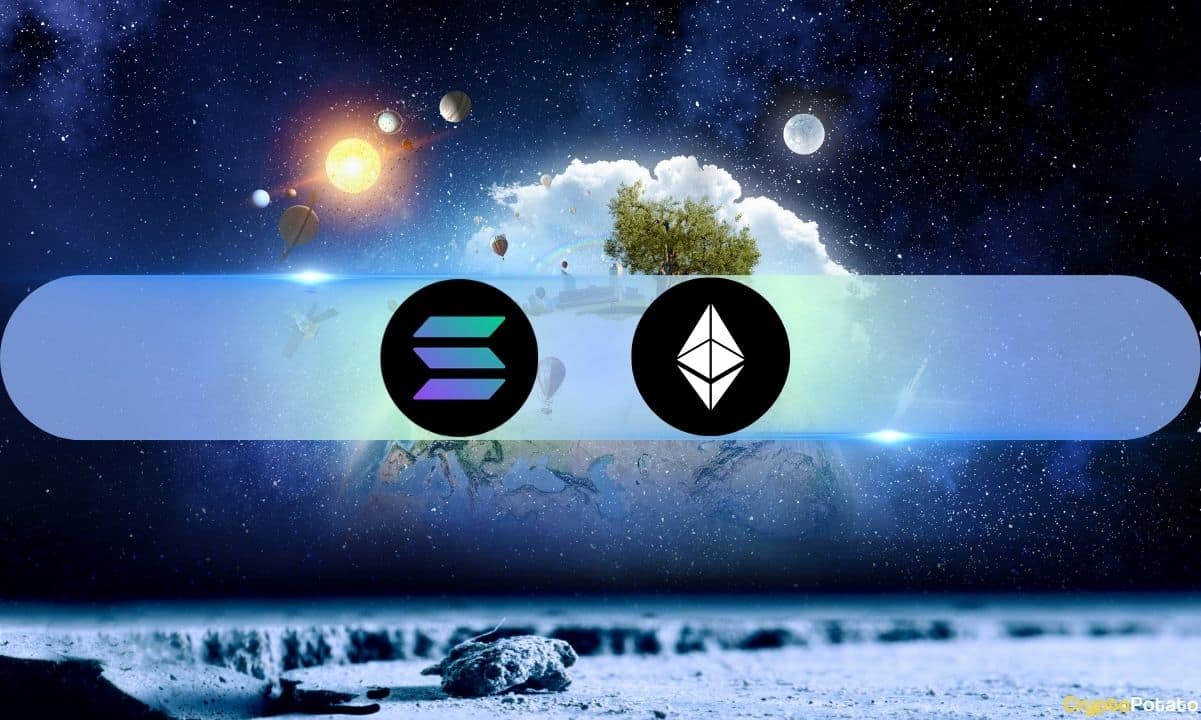 Vitalik Buterin and Anatoly Yakovenko Clash Over Ethereum’s Layer-2 Security
Vitalik Buterin and Anatoly Yakovenko Clash Over Ethereum’s Layer-2 SecurityA public exchange between Ethereum co-founder Vitalik Buterin and Solana co-founder Anatoly Yakovenko has gotten attention in the X crypto community. The debate centered on the level of security that Ethereum’s Layer 2 (L2) networks offer. Security and Centralization Risks Buterin recently defended Ethereum’s L2 architecture on X, saying that even if 51% of validators collude or suffer a software bug, they cannot steal user assets. However, he acknowledged that there are limitations if the validator set is trusted with tasks outside the chain’s control. He explained that in such a scenario, more than half of them could then collude and provide a false answer with no recourse. Yakovenko challenged this view, arguing that the claim that L2s inherit Ethereum’s security is incorrect. “The promise of L2s != the reality of L2s,” he wrote. He pointed out that five years into the L2 roadmap, Wormhole ETH on Solana faces the same worst-case risks as ETH on Base while generating comparable revenue for ETH L1 stakers. The Solana co-founder suggested that there is an inherent flaw in the networks that makes achieving the desired security difficult. He highlighted several major issues with how L2s function today. Their complex codebases create broad attack surfaces that are difficult to audit thoroughly. Multisig custody setups can also allow funds to be moved without user approval when signers collude or are compromised. Additionally, off-chain execution systems concentrate too much control in a few hands, undermining the decentralization that blockchain is meant to uphold. Yakovenko Proposes Ethereum as a Solana Layer-2 Yakovenko has proposed creating a dedicated bridge that would let Ethereum operate as a layer-2 on Solana to enable smooth asset movement between the two. He noted that this approach would not require any changes to the blockchain itself, and as zero-knowledge proving on the chain continues to evolve, the process will become even easier. Ethereum currently supports more than one million active validators, far exceeding Solana’s estimated 2,000. Supporters like crypto lawyer Gabriel Shapiro believe that this wide validator base strengthens protection against coordinated attacks. He explained that many critics either misunderstand or intentionally ignore that L2s are not simple servers running a blockchain. Since they are linked to Ethereum, specific transactions can be enforced within blocks, meaning decentralization on their level is unnecessary because the network itself provides that security. The post Vitalik Buterin and Anatoly Yakovenko Clash Over Ethereum’s Layer-2 Security appeared first on CryptoPotato.
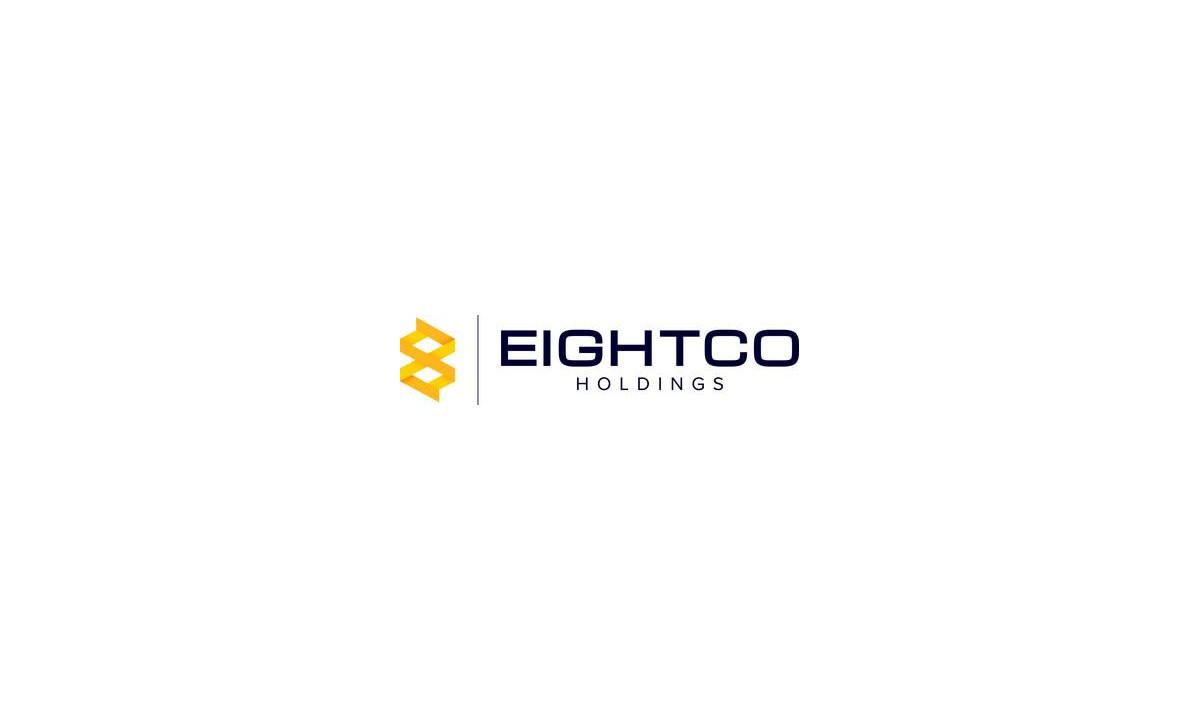 Eightco Holdings Inc. ($ORBS) Makes Strategic Investment into Mythical Games to Accelerate Human Verification and Digital Identity in Gaming
Eightco Holdings Inc. ($ORBS) Makes Strategic Investment into Mythical Games to Accelerate Human Verification and Digital Identity in GamingJoining strategic round alongside Cathie Wood’s ARK Invest and World Proving gamers are playing against verified humans across gaming universes Investment represents Eightco’s position as the authentication and trust layer for the post-AGI world The Company is supported by a select group of strategic and institutional investors including: BitMine (BMNR), MOZAYYX, World Foundation, Wedbush, Coinfund, Discovery Capital Management, FalconX, Kraken, Pantera, GSR, Brevan Howard and more EASTON, Pa., Oct. 13, 2025 /PRNewswire/ — Eightco Holdings Inc. (NASDAQ: ORBS) (“Eightco” or the “Company”) today announced a strategic investment into Mythical Games (“Mythical” or “Mythical Games”) Series D financing, participating in a deal led by Cathie Wood’s ARK Invest and World Foundation. The transaction is expected to close the week of October 20. Eightco ($ORBS) is the authentication and trust layer for the post-AGI world, working in coordination with the Worldcoin ecosystem. This strategic investment reinforces Eightco’s ($ORBS) central role in shaping the future of digital identity and verification. It also aligns with Eightco’s current corporate roadmap to allocate up to 1% of its treasury assets toward venture-style investments that advance breakthrough authentication technologies. “This investment marks another key step in our mission to become the authentication layer of the post-AGI economy,” said Dan Ives, Chairman of Eightco ($ORBS). “Eightco’s vision extends across critical fronts including enterprise and gaming authentication. By partnering with visionary leaders such as John Linden and Mythical Games, we’re bridging digital identity and entertainment, creating a trust framework that scales globally. Worldchain’s Proof of Human and single sign-on capabilities make it the ideal foundation for the next era of gaming and AI integration.” Led by former Call of Duty studio head John Linden, Mythical Games is a pioneer in Web3 gaming and digital ownership, with a growing portfolio of leading franchises including NFL Rivals, Pudgy Penguins’ Pudgy Party, and FIFA Rivals. The company plans to expand its marketplace product to integrate with Worldchain, an ERC-20-compatible blockchain built for Proof of Human (PoH) verification and single sign-on, marking a major step forward in secure, verifiable gaming infrastructure. Mythical Games’ expansion with Worldchain and World ID will enable seamless interoperability between gaming assets, wallets, and identity, giving players verified ownership of digital assets while reducing fraud and improving user onboarding. Together, Eightco, Mythical Games, and World are pioneering what comes next for AI-driven identity and digital economies. The strategic alignment ensures Mythical’s gaming ecosystem will be native to the same trust and identity stack that Eightco is building for the broader AI economy. Mythical has three games live already with over 1 million installs each: Pudgy Party (in partnership with Pudgy Penguins), NFL Rivals (in partnership with NFL and NFLPA), and FIFA Rivals (in partnership with FIFA and FIFPRO). These games have over 10 million installs combined and have been featured numerous times by both Apple App Store and Google Play. The Mythical Marketplace have over 9.6 million funded wallets and handles over $400 million a year in NFT sales volume. “Mythical is integrating with Worldchain to bring identity and trust into the next era of gaming,” said John Linden, CEO of Mythical Games. “Our vision is to make every player, whether in FIFA Rivals, Pudgy Party, or NFL Rivals, part of a verified, global economy where digital ownership and fair play are guaranteed. By partnering with Worldcoin, we can connect billions of players through secure, human-verified accounts that work seamlessly across games, marketplaces, and rewards. It’s about scaling real-world identity and on-chain utility together, turning gaming into the largest, most inclusive digital economy on the planet.” “Mythical’s 9.6 million wallets represent an installed base of users that can build on World ID’s over 17 million verified user count,” continued Ives. “We expect this partnership and future deals to drive positive step-change functions in the World verified customer base.” ABOUT EIGHTCO HOLDINGS INC. Eightco Holdings Inc. (NASDAQ: ORBS) is building the authentication and trust layer for the post-AGI world. Its mission centers on strategic pillars including consumer authentication, enterprise authentication, and gaming authentication. Through its pioneering digital asset strategies, including the first-of-its-kind Worldcoin treasury, and partnerships with leading technology innovators, Eightco is establishing a universal foundation for digital identity and Proof of Human (PoH) verification. For additional details, follow on X: https://x.com/iamhuman_orbs https://x.com/divestech ABOUT MYTHICAL GAMES Acknowledged by Fast Company’s World Changing Ideas 2021 and Forbes’ Best Startup Employers (2024), Mythical Games is a next-generation game company creating world-class games and empowering players to take ownership of their in-game assets through the use of blockchain technology. The team has helped develop major franchises, including Call of Duty, Call of Duty Mobile, World of Warcraft, Diablo, Overwatch, Magic: The Gathering, EA Madden, Harry Potter Hogwarts Mystery, Marvel Strike Force, Modern Warfare, and Skylanders. Mythical’s games, Blankos Block Party, NFL Rivals, Pudgy Party, and FIFA Rivals, are already played by millions of consumers worldwide and create a new economy for players, allowing them to engage in a new way with games but also directly trade and transact safely with other players worldwide. Forward-Looking Statements This press release contains forward-looking statements within the meaning of the Private Securities Litigation Reform Act of 1995. All statements in this press release other than statements of historical fact could be deemed forward looking. Words such as “plans,” “expects,” “will,” “anticipates,” “continue,” “expand,” “advance,” “develop” “believes,” “guidance,” “target,” “may,” “remain,” “project,” “outlook,” “intend,” “estimate,” “could,” “should,” and other words and terms of similar meaning and expression are intended to identify forward-looking statements, although not all forward-looking statements contain such terms. Forward-looking statements are based on management’s current beliefs and assumptions that are subject to risks and uncertainties and are not guarantees of future performance. Actual results could differ materially from those contained in any forward-looking statement as a result of various factors, including, without limitation: Eightco’s ability to maintain compliance with the Nasdaq’s continued listing requirements; unexpected costs, charges or expenses that reduce Eightco’s capital resources; Eightco’s inability to raise adequate capital to fund its business; Eightco’s inability to innovate and attract users for Eightco’s products; future legislation and rulemaking negatively impacting digital assets; and shifting public and governmental positions on digital asset mining activity. Given these risks and uncertainties, you are cautioned not to place undue reliance on such forward-looking statements. For a discussion of other risks and uncertainties, and other important factors, any of which could cause Eightco’s actual results to differ from those contained in forward-looking statements, see Eightco’s filings with the Securities and Exchange Commission (the “SEC”), including in its Annual Report on Form 10-K filed with the SEC on April 15, 2025. All information in this press release is as of the date of the release, and Eightco undertakes no duty to update this information or to publicly announce the results of any revisions to any of such statements to reflect future events or developments, except as required by law.
 Bybit Secures UAE’s First Virtual Asset Platform Operator License from Securities and Commodities Authority
Bybit Secures UAE’s First Virtual Asset Platform Operator License from Securities and Commodities AuthorityBybit, the world’s second-largest cryptocurrency exchange by trading volume, today announced that it has officially secured the Virtual Asset Platform Operator License from the Securities and Commodities Authority (SCA) of the United Arab Emirates (UAE). Bybit becomes the first crypto exchange to obtain this full license from the SCA, marking a historic milestone in the nation’s vision to establish itself as a global digital asset hub. This licensing brings along with the full product capability of Bybit’s existing global products and services into compliance. This symbolic milestone demonstrates Bybit’s assurance to users that it is committed to high standards of quality, product and service arising from rigorous compliance frameworks found not just in UAE but also globally. It also demonstrates Bybit’s long term global strategy of being locally enshrined and its commitment to bringing crypto to local markets. Bybit initially received its In-Principle Approval (IPA) from the SCA in February 2025 with the help of the Blockchain Centre, Abu Dhabi, in navigating SCA’s robust framework. The full license demonstrates the regulator’s trust in Bybit’s robust security infrastructure, operational transparency, and rigorous compliance standards. This achievement follows a series of regulatory milestones for Bybit in 2025 — including securing its MiCAR license in May and resuming full trading operations in India in September — as the exchange continues to expand its presence under a compliance-first roadmap across key global jurisdictions. Ben Zhou, Co-founder and CEO of Bybit, said: “Receiving the full Virtual Asset Platform Operator License from the SCA is a testament to Bybit’s unwavering commitment to building trust through compliance and transparency. The UAE has emerged as a global leader in digital asset regulation, and this recognition underscores the strength of our security and governance standards. At Bybit, we see regulation as the foundation for sustainable growth. This milestone marks another step forward in our global regulatory roadmap — from MiCAR in Europe to India and now the UAE — as we continue to set new benchmarks for a secure and responsible digital asset ecosystem.” Helen Liu, Co-CEO of Bybit, added: “We sincerely thank the Securities and Commodities Authority for their trust and support throughout the licensing process. The SCA’s clear, robust, and well-structured regulatory framework provides a strong foundation for global exchanges like Bybit to operate with confidence and clarity. This achievement would not have been possible without the SCA’s forward-thinking approach to fostering innovation and compliance in the digital asset space. We look forward to deepening our collaboration as we bring more resources, products, and expertise to the UAE market.” Bybit’s Upcoming Plan in UAE Under the SCA’s Virtual Asset Platform Operator License, Bybit will offer regulated virtual asset trading, brokerage, custody, and fiat conversion services to both retail and institutional clients across the UAE. The exchange plans to expand its local footprint by establishing a larger regional operations center in Abu Dhabi with over 500 employees across Abu Dhabi and Dubai, accelerating local hiring across compliance, operations, and customer service, and introducing new education and Web3 innovation programs in collaboration with local partners. Bybit’s continued investment in talent, technology, and infrastructure reaffirms its long-term commitment to supporting the UAE’s ambition to become a global hub for digital assets and financial innovation. #Bybit / #TheCryptoArk About Bybit Bybit is the world’s second-largest cryptocurrency exchange by trading volume, serving a global community of over 60 million users. Founded in 2018, Bybit is redefining openness in the decentralized world by creating a simpler, open and equal ecosystem for everyone. With a strong focus on Web3, Bybit partners strategically with leading blockchain protocols to provide robust infrastructure and drive on-chain innovation. Renowned for its secure custody, diverse marketplaces, intuitive user experience, and advanced blockchain tools, Bybit bridges the gap between TradFi and DeFi, empowering builders, creators, and enthusiasts to unlock the full potential of Web3. Discover the future of decentralized finance at Bybit.com. For more details about Bybit, please visit Bybit Press For media inquiries, please contact: [email protected] For updates, please follow: Bybit’s Communities and Social Media Discord | Facebook | Instagram | LinkedIn | Reddit | Telegram | TikTok | X | Youtube
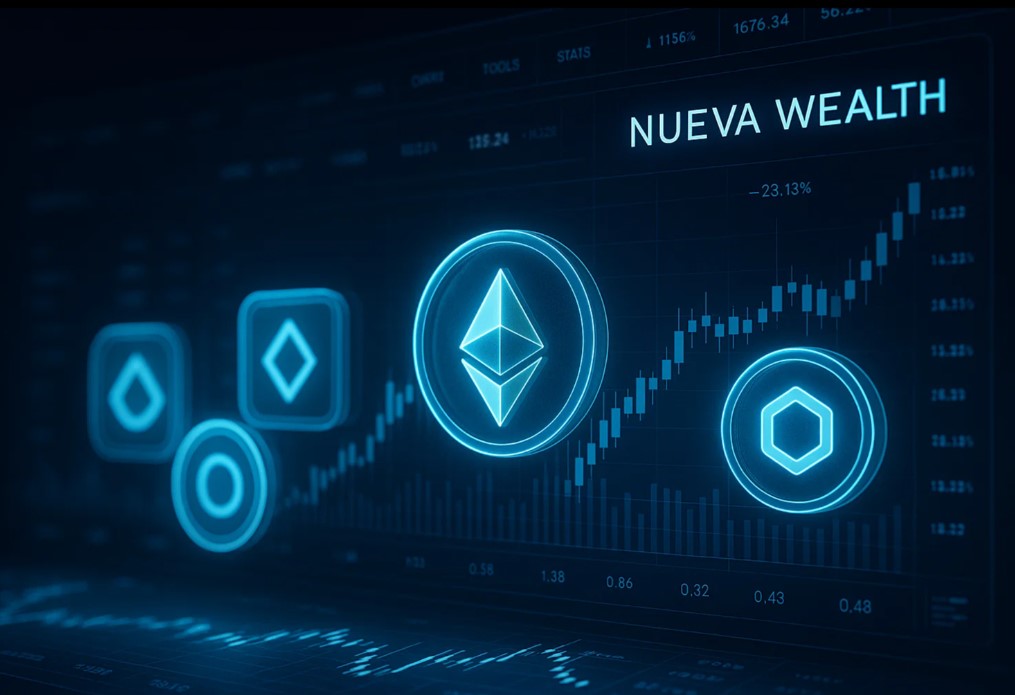 NuevaWealth for Altcoin CFD Trading – Pros, Cons & Tips
NuevaWealth for Altcoin CFD Trading – Pros, Cons & TipsIntroduction to Altcoin Trading Altcoins are any cryptocurrencies besides Bitcoin. Over the past decade the crypto ecosystem has exploded from a handful of coins to thousands, each trying to solve a specific problem—whether it’s enabling smart contracts (Ethereum), providing fast, low‑fee payments (Solana, Litecoin), powering decentralized finance (Uniswap, Aave), supporting NFTs and gaming (Axie Infinity, Decentraland), or offering privacy (Monero, Zcash). Because many of these projects are still early in their development cycles, their market prices tend to be more volatile than Bitcoin. That volatility creates opportunities for traders who can correctly anticipate short‑term price moves, but it also brings heightened risk of rapid losses. Key concepts to grasp before diving in: Market Capitalization & Liquidity – Larger caps (top 20) usually have tighter spreads and deeper order books, making it easier to enter and exit positions without slippage. Smaller caps can move dramatically on modest trade volumes, which can be attractive for speculative gains but also risky. Tokenomics – Understand the supply model (fixed vs. inflationary), distribution schedule (vesting, staking rewards) and utility of the token. Sudden token releases or protocol upgrades often trigger price spikes or drops. Fundamental Drivers – Project roadmaps, partnership announcements, regulatory news, and community sentiment (Twitter, Reddit, Discord) heavily influence altcoin price dynamics. Technical Analysis Basics – Trend lines, support/resistance zones, moving averages, RSI and MACD are commonly applied to altcoin charts. Given the higher noise, combining several indicators and confirming with volume can improve signal reliability. Risk Management – Set stop‑loss levels, limit leverage, and allocate only a small portion of your portfolio to any single altcoin. Diversification across several projects can smooth out the impact of a single coin’s failure. Regulatory Landscape – Some jurisdictions treat certain altcoins as securities, which can affect exchange listings and legal exposure. Stay informed about the regulatory status of the tokens you trade. By mastering these fundamentals—understanding what each altcoin aims to achieve, how its market behaves, and how to protect capital—you’ll be better equipped to navigate the fast‑paced world of altcoin trading. 1. Why Altcoins Matter Altcoins—cryptocurrencies other than Bitcoin—represent the bulk of the crypto ecosystem. They range from established projects like Ethereum, Solana and Cardano to newer tokens that aim to solve niche problems such as decentralized finance, gaming, or supply‑chain tracking. For many traders, altcoins offer higher volatility than Bitcoin, which can translate into larger short‑term price swings and, consequently, bigger profit opportunities—provided the trader understands the added risk. 2. How Nueva Wealth Handles Altcoins Nueva Wealth treats every cryptocurrency it lists as a CFD (contract‑for‑difference). When you open an altcoin position, you are not buying the token itself; you are speculating on its price movement relative to a fiat or stablecoin denominator. The platform currently offers a curated selection of altcoins, typically the top‑20 by market capitalization, plus a few emerging projects that meet its internal liquidity standards. Key characteristics of the altcoin CFD offering: Fixed spreads – The bid‑ask spread is set in advance and does not change with order size. During periods of extreme market stress, the spread may widen, which can affect entry and exit prices. Leverage options – Most altcoins are available with up to 1:10 leverage. This means a $100 margin can control a $1,000 notional position, magnifying both gains and losses. No token custody – Because the contracts are settled in fiat or a stablecoin, you never receive the underlying altcoin in a wallet. This eliminates concerns about private‑key management but also means you cannot use the token for staking, governance voting, or other on‑chain utilities. Overnight financing – Holding a leveraged altcoin position past the daily settlement window incurs a financing charge calculated on the notional value of the contract. 3. Advantages for Altcoin Traders Speed of Execution – Order latency is measured in sub‑seconds, which is valuable when trading fast‑moving altcoins where price changes can happen in milliseconds. Unified Dashboard – Altcoins sit alongside forex, stocks and commodities, allowing you to shift capital between asset classes without leaving the app. Risk Management Tools – Stop‑loss and trailing‑stop orders are available for each altcoin CFD, giving you a way to limit downside exposure. No Custodial Hassles – Since you never hold the actual token, you avoid the complexities of securing private keys, managing wallets, or dealing with network congestion when transferring coins. 4. Limitations and Risks Lack of Ownership – Without holding the real token, you cannot benefit from airdrops, staking rewards, or governance participation that many altcoin projects offer. Leverage‑Induced Volatility – Altcoins already exhibit high price swings; adding leverage can quickly erode a margin balance if the market moves against you. Liquidity Constraints – While Nueva Wealth selects altcoins with sufficient liquidity, the CFD market depth can be thinner than the spot market on major exchanges. Slippage may occur on large orders. Regulatory Ambiguity – Operating under an offshore licence, the platform does not fall under EU or UK investor‑protection regimes. In the event of insolvency, there is no statutory compensation for deposited funds. Limited Educational Content – The platform’s built‑in learning resources cover basic CFD concepts but do not delve deeply into altcoin fundamentals, tokenomics, or project‑specific risk factors. Traders need to conduct independent research. 5. Practical Tips for Using Nueva Wealth with Altcoins Start Small – Allocate only a modest portion of your capital (e.g., ≤ 10 %) to leveraged altcoin positions until you become comfortable with the platform’s execution and fee structure. Set Protective Stops – Use stop‑loss orders at a level that reflects the altcoin’s typical volatility; consider a trailing‑stop to lock in gains if the price moves favorably. Monitor Financing Costs – If you plan to hold a position overnight, calculate the daily financing charge and factor it into your profitability analysis. Cross‑Check Liquidity – Before entering a sizable trade, compare the quoted spread on Nueva Wealth with spot market spreads on major exchanges (e.g., Binance, Coinbase). A significantly wider spread may indicate lower CFD liquidity. Do Independent Research – Review the altcoin’s whitepaper, roadmap, developer activity, and community sentiment. CFD exposure does not replace the need for fundamental analysis. 6. Frequently Asked Questions Specific to Altcoins Do I earn staking rewards on altcoins traded through Nueva Wealth?No. Because the contracts are settled in fiat or stablecoins, you do not hold the actual token and therefore cannot participate in staking or delegation programs. Can I trade any altcoin I want?Only the altcoins that Nueva Wealth lists are available as CFDs. The selection is limited to assets that meet the platform’s liquidity and compliance criteria. What happens if an altcoin gets delisted on the spot market?If the underlying token is removed from major exchanges, Nueva Wealth may suspend CFD trading for that asset. Existing positions could be closed automatically, and any resulting profit or loss would be settled in fiat. Are there any tax implications specific to CFD altcoin trading?Tax treatment varies by jurisdiction. Generally, CFD profits are considered capital gains or income, depending on local law. Because you never own the token, you do not report a “crypto acquisition” event, but you do need to declare realized gains or losses from CFD closures. Consult a tax professional for guidance. 7. Verdict – Is Nueva Wealth Good for Altcoin Trading? Nueva Wealth offers a fast, mobile‑friendly environment that makes it easy to speculate on a curated list of altcoins. Its strengths lie in rapid order execution, built‑in risk‑management tools and the convenience of handling multiple asset classes from a single interface. For experienced traders who are comfortable with leveraged speculation, understand the risks of CFD products, and are primarily interested in short‑term price movements, Nueva Wealth can be a suitable venue for altcoin exposure. For newcomers or those who wish to hold altcoins long‑term, earn staking rewards, or rely on regulatory protections, a traditional spot exchange or a regulated broker that offers direct token custody may be a better fit. Ultimately, the decision hinges on your trading objectives, risk tolerance, and willingness to supplement the platform’s limited educational content with independent research. If you choose to proceed, start with a small allocation, use protective stops, and keep a close eye on financing costs and liquidity conditions.
 PUMP OVERTAKES HYPERLIQUID, GALAXY DIGITAL BUYS $300M SOL, FOMC THIS WEEK
PUMP OVERTAKES HYPERLIQUID, GALAXY DIGITAL BUYS $300M SOL, FOMC THIS WEEKCrypto reverses weekend strength, FOMC this week. BTC ETF inflows hit $2.3b last week. Gemini stock soars on IPO. Atkins scraps SEC’s crypto enforcement agenda. Tether launches USA₮ stablecoin, Bo Hines as CEO. Monero rallies despite being hit by 18 block reorg. Allied Gaming establishes DAT. Galaxy Digital buys $300m SOL. Native Markets wins USDH bid. Ethereum Foundation releases privacy roadmap. AI run crypto governance is a bad idea: Vitalik. ETH stablecoin supply hits ATH $166b. BoE plans to restrict stablecoin ownership in UK. LSE completes first blockchain powered fund raising. Pakistan invites crypto firms to apply for license. Yala’s YU stablecoin fails to restore peg after attack. Shibarium Bridge hacked for $2.4m. Polymarket weighs financing at $9-10b valuation. Polkadot to tighten tokenomics, capping DOT supply.
